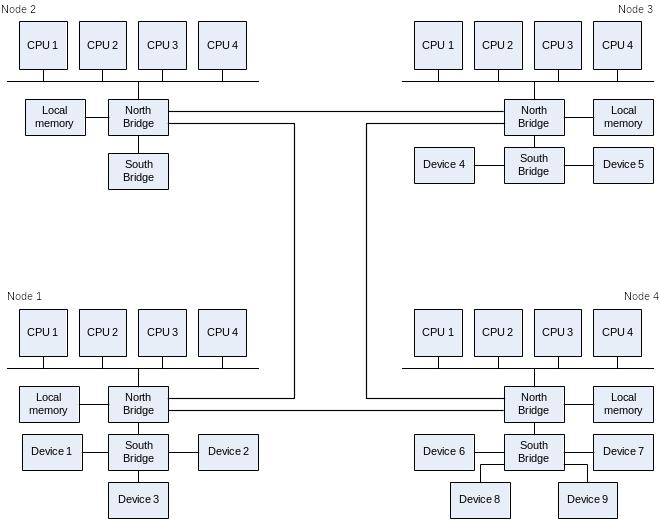
- •1Introduction
- •2Multiprocessor Support in Windows
- •3Simultaneous Thread Execution
- •4Reentrant and Concurrent Routines
- •4.1Reentrancy
- •4.2Concurrency
- •4.2.1Concurrency with Respect to Driver Object
- •4.2.2Concurrency with Respect to Device Object
- •4.2.3Concurrency with Respect to File Object
- •5Synchronizing Access and Enforcing Program Order
- •5.1The volatile Keyword
- •5.2Windows Synchronization Mechanisms
- •6Memory Barriers and Hardware Reordering
- •6.1Memory Barrier Semantics
- •6.2Windows Kernel-Mode Memory Barrier Routines
- •6.3Hardware Reordering on x86, x64, and Itanium Architectures
- •6.3.1Additional Hardware Reordering on the Intel Itanium Architecture
- •7Performance and Scalability
- •7.1Locking Issues
- •7.1.1Frequently Used Locks
- •7.1.2Deadlocks
- •7.1.3Live Locks
- •7.2Caching Issues
- •8Testing
- •8.1Driver Verifier
- •8.2Call Usage Verifier
- •8.3Kernrate and KrView
- •8.4DevCon
- •9About numa Architectures
- •10Best Practices for Drivers
- •11Resources
8.3Kernrate and KrView
Kernrate is a general purpose profiler for tracking CPU utilization. It samples the CPU periodically and reports what is executing. Kernrate can do the following to help you tune your driver:
Identify CPU usage patterns.
Determine which routines consume the most CPU time.
Collect data for individual processors in a multiprocessor system.
KrView is a companion tool that organizes the Kernrate data and displays it graphically in Microsoft Excel spreadsheets. For more information on these tools, see “Analyze Driver Performance,” which is listed in the Resources section at the end of this paper.
8.4DevCon
For Windows Vista, Microsoft plans to update the DevCon utility to provide additional support for testing and fine-tuning on multiprocessor systems. In this version of DevCon, the new policy option displays and changes the interrupt affinity for a device. If your device is targeted at very specific markets, such as high-end server farms, you might find this option useful in fine-tuning performance.
9About numa Architectures
In addition to the traditional SMP architectures described previously, Windows runs on cache-coherent NUMA architectures (ccNUMA or, more simply, NUMA). Windows Server 2003 provides limited support for such architectures; current plans for Windows Vista include additional features.
Figure 6 shows how the processors, memory, and devices might be configured in such a system.

Figure 6. Hypothetical NUMA configuration
As the figure shows, the processors in a NUMA machine are organized into nodes. Each node has local memory and may also have local devices. All of the memory in the system is available to all processors on all nodes, but access times differ, depending on where the memory is located. For example, Node 1 in the figure can access its local memory the fastest, but requires additional time to access the memory attached to Nodes 2 and 4; accessing memory in Node 3 takes even longer.
The caches of all processors in all nodes are guaranteed to remain coherent; the contents of the cache on one processor will never be out of date with respect to the contents of the cache on any other processor.
On NUMA architectures, a device can interrupt on any node by default, and the ISR and DpcForIsr routines run on the same node on which the device interrupted.
Drivers that run on NUMA architectures are subject to all of the same concurrency, synchronization, and reordering issues previously described in this paper. Such architectures give the same guarantees as traditional SMPs with respect to the ordering of instructions.
However, some effects that are not often seen in traditional SMP architectures are frequently observed in NUMA architectures. Consider a traditional spin lock that is owned by a processor in Node 1. If two threads are waiting for it—one in Node 1 and one in Node 2—the waiting thread in Node 1 will probably receive many more memory cycles when trying to acquire the lock than the waiting thread in Node 2. Consequently, the waiter in Node 2 might receive fewer cycles (a situation called starvation) and consequently have a much lower chance of acquiring the lock. This is an important reason to use queued spin locks, instead of traditional spin locks, when contention is high.
